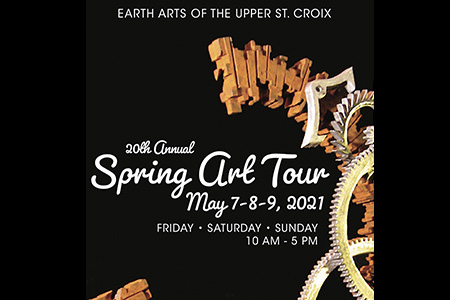Sharp-tailed Grouse dance in the Namekagon Barrens
By Ian Karl, Northwest Passage Experiential Programming Coordinator
Sharp-Tailed Grouse, with their mottled dusky feathers and signature short pointed tails, once populated a vast swath of North America. They could be seen from Alaska to New Mexico and they dominated the pine barrens of North Western Wisconsin. Through years of extreme habitat change, the population of Sharp-Tailed Grouse in Wisconsin was severely impacted. In recent years however, conservation efforts of organizations such as the Wisconsin Sharp-tailed Grouse Society and Friends of the Namekagon Barrens Wilderness Area (FNBWA) have begun to restore the population of these magnificent birds in their native habitat. Once a year, for a few short weeks, the males display their stunning purple and gold accented breeding plumage and perform a truly breathtaking dance in a courtship ritual to win the favor of the hens.
In late April Northwest Passage was presented with an unprecedented opportunity by the FNBWA for one of our residents to view and document this fleeting event to share with the world. Weston, one of our star photographers from Passage I, joined Seth Pearson, Northwest Passage Creative Arts Teacher, for a very early morning in one of the FNBWA’s viewing blinds “lek” (courtship dance location) in the pine barrens of the Namekagon River, part of the St. Croix National Scenic Riverway, our region’s own National Park.
Northwest Passage extends its sincere gratitude to the Friends of the Namekagon Barrens Wilderness Area for this exceptional opportunity. As is evident from Weston’s comments, it is an experience that will not soon be forgotten.

A Reflection by Weston:
I’ve always heard and imagined how rare it is to see, let alone hear, a threatened species perform a mating dance, but now out of fortunate timing and lighting I have wonderful pictures, as well as memories, of sharp tailed grouse performing their mating dances. Even before leaving to go to the photography site I was concerned about how it would turn out….Will there be any?…If so, how many?…2, 6, 10?! My questions were answered. Seth (my photography counselor) and I departed at 4:50 am to beat the sunrise, get in the blind and set up before the sun would peak over the hilltops. We arrived punctually and as we silently opened our doors we could hear the early birds already starting to perform. We looked at each other knowing it was going to be a good day. As we walked in the area the birds took off and we set off towards the blind with our expectations peaked. We entered the blind, set up our cameras thinking that the grouse would return in fifteen minutes or so. But in less than a minute they started coming back and in less than four minutes they all came back and picked up where they left off.
There were over 35 grouse with bright gold eyebrows, beautiful purple necks, and they were all chirping. They sound they made was almost like a low gobble. When they would all dance, they slouched their necks, hold out their wings and stamp their feet repeatedly. But the weirdest thing was that between dances, they would all stop and the air would hush for a full ten seconds. Then they would continue. It’s a mystery I still don’t understand, but will remember for the rest of my life.
-Westin, age 16.

We Are All Territorial

Which One, Which One!

Is She Looking!

Natural Duel, Take No Mercy

It Comes Down To Her Choice

She’s Mine!



Recent Comments